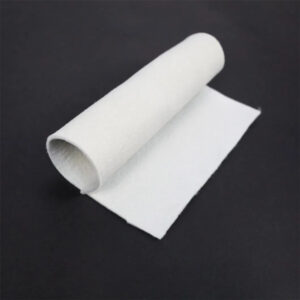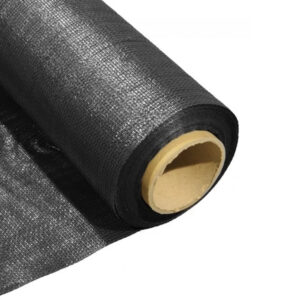What is three-dimensional geotextile?
Three-dimensional geotextile is a geotechnical material with a three-dimensional structure that is designed and manufactured to form a three-dimensional support network. This structure gives three-dimensional geotextiles special functions and advantages in soil reinforcement and protection.
The following are some characteristics and functions of three-dimensional geotextiles:
Supportive Structure: Three-dimensional geotextiles are typically made from high-strength synthetic fibers that form a structure similar to a grid or grating. This structure creates a support network in the soil, helping to increase its strength and stability.
Soil reinforcement: By laying three-dimensional geotextile in the soil, the soil can be effectively reinforced and the settlement and erosion of the soil can be slowed down or prevented. This is useful in projects where the mechanical properties of the soil need to be improved, such as when building roads or buildings on weak foundations.
Protection and control of erosion: Three-dimensional geotextiles can be used to prevent soil erosion by water flow, especially on river banks, river beds and other areas prone to erosion. It stabilizes the soil surface and prevents it from being washed away by water flow.
Vegetation Support: Three-dimensional geotextiles can be used in conjunction with vegetation to provide additional support to the vegetation. This is particularly useful in ecological restoration projects, helping plants grow in fragile soil conditions and preventing erosion.
Water Permeability: The structure of three-dimensional geotextiles generally allows water and other liquids to pass freely without affecting the water permeability of the soil. This is important to maintain water tables and the proper functioning of drainage systems.
Coping with uneven settlement: Under some geological conditions, uneven settlement of soil may occur, leading to deformation or damage of structures. Three-dimensional geotextiles can be used to mitigate the effects of this uneven settlement and improve the overall stability of the soil.
Overall, three-dimensional geotextile is a versatile geomaterial suitable for a variety of civil engineering, soil and water conservation, and environmental remediation projects.

What is non-woven geotextile?
Nonwoven geotextile is a nonwoven material made of short fibers or filaments through chemical, mechanical or thermal processes. The manufacturing process of this geotextile does not involve traditional weaving or weaving processes, but is formed by bonding layers of fibers to each other.
The following are the main characteristics and applications of non-woven geotextiles:
Material: Non-woven geotextiles are usually made of synthetic fibers such as polypropylene (PP) or polyester (PET). These fibers can be short fibers or long filaments, depending on the design and purpose of the geotextile.
Structure: Due to the non-woven process, the structure of non-woven geotextile is more uniform and has no obvious fabric texture. This uniform structure gives geotextiles consistency in performance.
Function: Non-woven geotextiles are mainly used in civil engineering and have functions such as filtration, separation, reinforcement and protection. It blocks the passage of soil particles while allowing moisture and other fluids to pass through, thus acting as a filter and drainer.
Application: Non-woven geotextiles are widely used in various engineering projects, such as road construction, railway engineering, water conservancy projects, coastal protection, environmental engineering, etc. It is often used to enhance soil structure, prevent erosion, improve soil stability, etc.
Protection: Non-woven geotextiles can be used to protect shorelines, soil slopes and other erosion-prone places to slow down or prevent soil loss.
Filtration: In some projects, non-woven geotextile is used as a filter layer to help filter particles in the water and prevent soil particles from being washed away with the water flow.
Overall, non-woven geotextile is a multifunctional geomaterial, and its characteristics make it play an important role in civil engineering and environmental engineering.
What is woven geotextile?
Woven geotextile is a geotechnical material made through a weaving process in the warp and weft directions. This is different from the way non-woven geotextiles are manufactured, which are non-woven structures formed by layers of fibers that are superimposed, bonded or melted. In contrast, woven geotextiles use a weaving method to form a mesh structure by weaving yarns.
Here are some characteristics and applications of woven geotextiles:
Material: Woven geotextiles are usually made of synthetic fibers such as polypropylene (PP) or polyester (PET). These fibers can be monofilaments or composite filaments.
Weaving structure: The weaving structure of woven geotextiles can be different weaves such as plain weave, twill weave or satin weave. The specific choice depends on the requirements of the project. This structure gives the woven geotextile a certain strength and stability.
Strength and Durability: Due to their woven construction, woven geotextiles typically have higher tensile strength and abrasion resistance, making them suitable for geotechnical applications that require greater strength.
Application: Woven geotextiles are widely used in civil engineering, water conservancy engineering, environmental engineering and other fields. It can be used for soil reinforcement, river bank protection, road paving, soil separation and filtration, etc.
Soil Separation: Woven geotextiles can be used to separate soil types or particle sizes, preventing them from mixing while still allowing moisture and other liquids to pass through.
Protection: In some projects that require protection, woven geotextiles can be used to resist erosion by water flow, waves or other external forces and protect the soil structure.
Generally speaking, the application of woven geotextiles in civil engineering is mainly reflected in reinforcement, protection, filtration and separation. Its selection and use usually depends on the needs of the specific project and soil conditions.
Author
-

Founded in 2002, Tinhy's team focuses on the manufacturing, marketing, installation, application and research and development of geosynthetic materials.
View all posts





